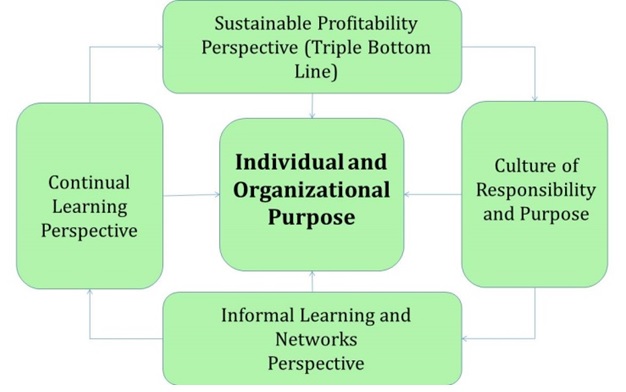Of all the issues that executive teams and HR directors face, one of the most challenging is how to achieve a sense of purpose among employees. Initiatives in this area are just as likely to provoke employee resistance as they are to stimulate employee engagement.
Too often, the process of instilling a powerful sense of purpose in an organisation involves long-drawn-out meetings and a mildly inspirational speech from the CEO about the company’s mission and vision. Afterwards there will usually be some managers and employees who criticise the leadership team under their breath for their ignorance of what actually goes on inside the company.
So what’s going wrong? By giving a speech creating an inspirational vision for the company, the CEO is demonstrating transformational leadership behaviour. The aim is to justify the organisation’s need for change and to achieve the change through the help of executive implementation. Why then do these speeches so often provoke criticism?
Transformational leaders
The root of the problem here is that knowing about transformational leadership does not automatically make someone a transformational leader.
Although many senior managers and company directors acknowledge the link between transformational leadership and sustainable profitability, many of them have not successfully mastered the skill.
Organisations make frequent attempts to improve leadership skills among their employees. This is done through leadership seminars, team-building exercises, pep talks and so-called motivational speeches from senior management. Nevertheless, they often fail to create the conditions that lead to sustainable profitability. Without a strong sense of purpose, organisations suffer from alienation, inconsistency, pettiness and a general lack of meaningful engagement between leaders and employees.
Creating a culture of purpose
So how do we ensure that transformational leadership is successfully applied in an organisation to provide a sense of purpose among employees, and in turn improve business turnover? I gained some interesting insights into this while studying for my online MBA at the University of Liverpool.
According to research done by Cross and colleagues in The hidden power of social networks, informal networking and informal influence on group behaviour have a substantial impact on knowledge mobilisation, fluidity in managing scale and organisational performance. Within these informal networks, titles and hierarchies matter insofar as they help to solve an organisational problem, but competencies, skillsets and camaraderie rule.
Excellent examples include the PayPal Mafia (former PayPal founders and members who have developed informal links with each other) and Google, where informal personal projects are encouraged.
Creating a culture of purpose and responsibility takes time and patience. Persistent negative attitudes and behaviours are not changed overnight. Changing embedded negative cultural behaviours and paradigms requires long-term strategic thinking, interdepartmental cooperation and leadership development. Both competency-based and principle-centred leadership are always team-intensive, goal-oriented and critically reflexive.
Actions speak louder than words when it comes to transformational leadership. Creating a culture of purpose directly addresses the disparity between leader perspectives and employee perspectives by acknowledging employee experiences, and rewarding employee loyalty and high performance competencies.
Connecting individual and organisational purpose
Organisations can build authenticity, trust and creativity among employees by encouraging continual learning. It is a way for employees to define their own sense of purpose. Leaders need to recognise employees who hunger for learning, encouraging them to pursue higher education and link with academic institutions.
Continual learning undermines the idea that critical roles exist within different departments, levels, and formal and informal groups. Consequently, an emphasis on continual learning ensures that talent is not just recruited in the company, but also stimulated internally to produce a depth of talent, initiative and principle-based decision-making.
Leaders must learn to facilitate a strong connection between their employees’ sense of purpose and sustainable profitability. Research done by Rosso and colleagues on work meaning [PDF] has strongly asserted that successful transformational leaders communicate the need for a compelling individual sense of purpose while aligning this purpose with the organisation’s mission and long-term strategy. Organisations need to use standards of excellence and competence to drive growth and improvement, and constructive conflict to drive innovation.
These drivers vary from individual to individual and organisation to organisation, so finding the right drivers for your business and employees is crucial to success.

Transformational leadership can only be effective if it is implemented correctly. Transformational leaders can achieve strong engagement among their employees by valuing informal networks, creating a culture of purpose and responsibility, encouraging continual learning and establishing a clear connection between individual purpose and the triple bottom line.
The motivational speeches are important, but it takes more than some inspirational words to truly engage employees to work towards sustainable profitability.










